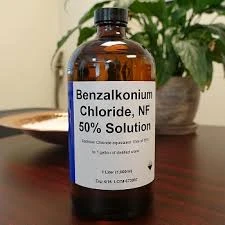poly aluminium chloride uses in water treatment
The Use of Poly Aluminium Chloride in Water Treatment
Water is essential for life, yet access to clean and safe drinking water remains a significant challenge in many parts of the world. To address water quality issues, various chemical coagulants are utilized in water treatment processes. One such coagulant is Poly Aluminium Chloride (PAC), known for its efficiency and versatility. This article explores the uses of PAC in water treatment, its benefits, and its impact on water quality.
Understanding Poly Aluminium Chloride
Poly Aluminium Chloride is an inorganic chemical, a type of aluminium-based coagulant. It is produced through the hydrolysis of aluminium chloride, yielding a polymeric compound that consists of aluminium ions and hydroxyls. PAC is available in both liquid and solid forms and is known for its superior coagulation properties compared to traditional coagulants like Aluminium Sulphate (Alum).
Applications of PAC in Water Treatment
1. Drinking Water Purification One of the primary applications of PAC is in the treatment of drinking water. It helps remove impurities and contaminants by promoting the agglomeration of suspended particles, which can then be easily removed via sedimentation or filtration. This process effectively reduces turbidity and enhances the aesthetic quality of water.
2. Wastewater Treatment PAC is also widely used in wastewater treatment facilities. It aids in the clarification of industrial and municipal wastewater by facilitating the removal of oils, greases, and other particulates. By improving the settling characteristics of sludge, PAC helps in the efficient operation of treatment plants, thereby achieving better effluent quality.
3. Sludge Conditioning In addition to its coagulation capabilities, PAC is effective in sludge conditioning. It enhances the dewatering process by making the sludge more manageable, which is crucial for reducing the volume of waste that needs to be disposed of. This is particularly beneficial in industries that generate large amounts of wastewater.
4. Contaminant Removal PAC is effective in removing various contaminants, including heavy metals, organic compounds, and pathogens. Its ability to form larger flocs means that these harmful substances can be trapped and removed from water more efficiently. This is especially important in areas where water sources are impacted by industrial effluents.
Advantages of Using PAC
poly aluminium chloride uses in water treatment

The advantages of using Poly Aluminium Chloride in water treatment are numerous
- Higher Coagulation Efficiency PAC is known for its superior coagulation performance, which can lead to faster sedimentation and clearer water. Its effective polymeric structure allows it to bond well with a variety of contaminants.
- Lower Dosage Requirements Compared to traditional coagulants, PAC often requires lower dosage rates to achieve similar or improved results. This leads to cost savings in chemical procurement and reduced environmental impact.
- Versatility PAC can be used in a variety of water treatment applications, making it a versatile choice for municipalities and industries alike.
- Improved Water Quality By effectively removing a wide range of contaminants, PAC improves the overall quality of water, making it safer for consumption and discharge into the environment.
Environmental Considerations
While PAC offers numerous benefits, it is important to consider its environmental impact. The use of aluminium-based coagulants can potentially introduce residual aluminium into water systems. However, when used responsibly and in accordance with regulatory guidelines, PAC can be a safe option for water treatment. Continuous monitoring and advanced treatment processes can mitigate any adverse effects.
Conclusion
In conclusion, Poly Aluminium Chloride plays a vital role in modern water treatment processes. Its effectiveness in coagulation and contaminant removal makes it a preferred choice for both drinking water and wastewater treatment applications. As the demand for clean water rises, understanding and utilizing effective coagulants like PAC will be essential in safeguarding public health and the environment.
-
The Ultimate Guide to Flocculants: Transforming Water TreatmentNewsNov.01,2024
-
Improve Your Water Treatment Solutions with PolyacrylamideNewsNov.01,2024
-
Enhance Your Water TreatmentNewsNov.01,2024
-
Empower You to Achieve the Highest Standards of Water QualityNewsNov.01,2024
-
Effective Scale InhibitorsNewsNov.01,2024
-
Discover the Power of Poly Aluminum Chloride in Water TreatmentNewsNov.01,2024





